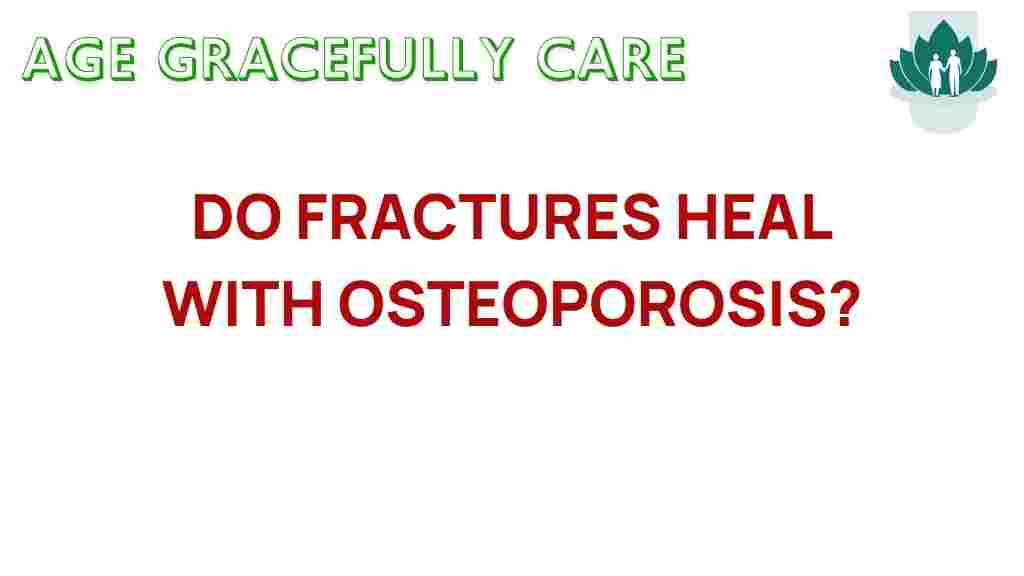Do Fractures Heal Effectively in Osteoporosis Patients?
Osteoporosis is a condition characterized by weakened bones, making them more susceptible to fractures. For patients with osteoporosis, the healing process after a fracture can be more complicated than in individuals with healthy bone density. Understanding the relationship between osteoporosis, fractures, and effective treatment options is crucial for improving bone health and ensuring a smoother recovery, especially among the elderly.
Understanding Osteoporosis and Its Impact on Bone Health
Osteoporosis affects millions of people worldwide, particularly the elderly. It leads to a decrease in bone mass and density, increasing the risk of fractures. Here are some key points about osteoporosis:
- Bone Density Loss: Osteoporosis occurs when bone resorption outpaces bone formation, leading to fragile bones.
- Fracture Risk: Common fractures associated with osteoporosis include hip, spine, and wrist fractures.
- Symptoms: Often referred to as a “silent disease,” osteoporosis may not present symptoms until a fracture occurs.
Risk Factors for Osteoporosis
Several factors can contribute to the development of osteoporosis. Understanding these risk factors can help in prevention and early intervention:
- Age: The risk increases with age, especially for women post-menopause.
- Genetics: A family history of osteoporosis can elevate risk.
- Body Size: Individuals with smaller body frames have a higher risk.
- Lifestyle Choices: Poor diet, lack of exercise, smoking, and excessive alcohol consumption can contribute.
- Medical Conditions: Certain diseases and medications can lead to bone loss.
The Healing Process of Fractures in Osteoporosis Patients
The healing process of fractures in osteoporosis patients can be slower and more complicated. Here’s how it typically unfolds:
- Initial Assessment: After a fracture occurs, medical professionals will assess the type and severity of the fracture through imaging tests.
- Stabilization: Treatment may include immobilization through casts or splints to stabilize the fracture.
- Bone Healing: The body begins to heal the fracture by forming a callus, which eventually hardens into new bone tissue. In osteoporosis patients, this process may be less efficient due to lower bone density.
- Rehabilitation: Physical therapy is often necessary to restore strength and mobility after the fracture heals.
Treatment Options for Osteoporosis and Fractures
Effective treatment is essential for managing osteoporosis and promoting fracture healing. Various treatment options include:
- Medications:
- Bisphosphonates: These drugs help prevent bone loss and may improve bone density.
- Hormone Replacement Therapy: This can be effective, particularly for post-menopausal women.
- Calcium and Vitamin D Supplements: Essential for bone health.
- Nutritional Support: A balanced diet rich in calcium and vitamin D is crucial for bone health.
- Physical Activity: Weight-bearing exercises can strengthen bones and improve balance, reducing the risk of falls.
- Fall Prevention Strategies: Modifying the home environment to prevent falls is critical in elderly care.
Step-by-Step Recovery After a Fracture
Recovering from a fracture while managing osteoporosis requires a structured approach:
- Follow Medical Advice: Adhere to the physician’s recommendations regarding medications and treatments.
- Engage in Rehabilitation: Participate in physical therapy sessions tailored to your needs.
- Maintain a Healthy Diet: Focus on foods high in calcium and vitamin D to support bone health.
- Stay Active: Gradually incorporate safe physical activities to promote strength and balance.
- Monitor Progress: Regular follow-ups with healthcare professionals to assess healing and adjust treatment plans as necessary.
Troubleshooting Common Issues During Recovery
During recovery, patients may face challenges. Here are some common issues and solutions:
- Pain Management: If pain persists, consult with a doctor for possible adjustments in pain relief medications.
- Mobility Limitations: Work closely with a physical therapist to enhance mobility and strength gradually.
- Dietary Concerns: If you struggle to meet nutritional needs, consider consulting a nutritionist for personalized advice.
- Mood Changes: Feelings of depression or anxiety can arise; seek support from mental health professionals if needed.
The Role of Elderly Care in Managing Osteoporosis
For elderly individuals, proper care and management of osteoporosis are vital to prevent fractures and ensure effective recovery:
- Regular Health Check-ups: Frequent assessments to monitor bone health and adjust treatment plans.
- Supportive Care: Assistance with daily activities can help maintain independence while ensuring safety.
- Education: Teaching patients and families about osteoporosis can empower them to make informed choices regarding health.
- Community Resources: Utilize local resources and support groups for additional help and encouragement.
Conclusion
In conclusion, while fractures in osteoporosis patients can be challenging, effective treatment and proper care can lead to successful healing and recovery. Understanding the factors that influence bone health and actively participating in the healing process can significantly impact outcomes. For more information on osteoporosis and its management, consider visiting reputable resources such as National Osteoporosis Foundation. Remember, proactive steps in elderly care can enhance quality of life and minimize the risks associated with osteoporosis and fractures.
For further insights and supportive community resources, check out our elderly care guide.
This article is in the category Health and created by AgeGracefullyCare Team
